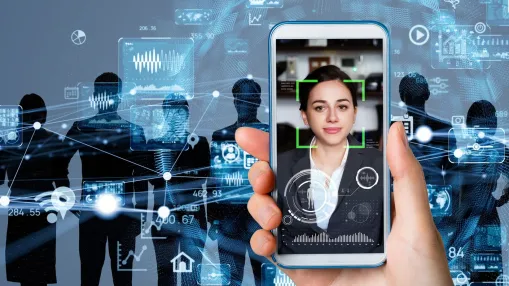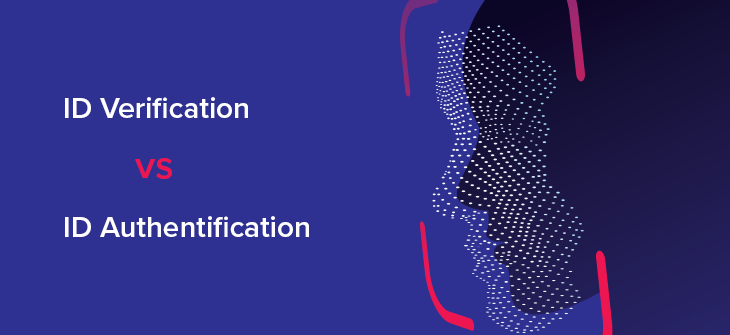Every person has a unique identification that separates them from others. Today, most businesses and services have shifted online. It means organizations and consumers wish for efficient methods to prevent evolved forms of fraud. A person must confirm their identity with identity verification and authentication methods.
Most organizations tend to interchange the two methods. Identification verification and authentication indicate two separate processes to reduce the risk of fraud or losses. Organizations failing to distinguish between the two terms can make themselves vulnerable to fraudulent activities. It may put the customers at risk resulting in business failure. Do you wish to know the difference? Check below to learn more.
About Identification
A person’s identity includes their name and date of birth. Individuals using a service must complete the registration process by providing their personal information. Unfortunately, most companies never check the authenticity of the information provided. It can result in risky situations.
Avoiding additional steps to check the user’s identity can encourage fraudsters to scam others. Scammers can steal the identity of people to create fake accounts on social media platforms and use it for nefarious purposes like human trafficking. How to avoid this scenario? The next step can prevent spam profiles and misuse of names on social media networks.
Understanding Identity Verification

Identity verification of an individual involves verifying the identity by checking the name, house address, phone number, and other details. People can provide government-issued verification proofs like driving licenses or government-issued identity cards. Biometric data and facial recognition using photos may also aid in identity verification.
Without identity verification, scammers can steal the credentials and identities of people and use them for their benefit. Such incidents came to light during the pandemic when reports indicated organized crime rings using stolen identities to commit fraud. They claimed fraudulent unemployment benefits and collected millions of dollars. To overcome such issues, government agencies have started using identity-proofing services. It compares the selfies submitted to the official photos to determine their legitimacy.
About Identity Authentication

This process goes one step forward than identity verification to prove a person’s authenticity. It is a necessary step when an individual attempt to access confidential information or complete a high-value transaction. It includes three authentication factors.
- Provide secret information known only to you. It may include PINs, passwords, and answer to confidential questions.
- Generating or receiving one-time passwords or codes on your possessions like key fobs, smartphones, physical tokens, or cards.
- Submit unique physical traits of people like fingerprints, facial recognition, voice recognition, age verification and others
Scammers cannot access accounts when authentication uses 2FA (Two-Factor Authentication) and Multi-factor Authentication (MFA). You can integrate identity authentication services to safeguard sensitive information and avoid risks.
Difference Between Identification, Verification, and Authentication
Identification refers to the first step taken by a user to provide information about themselves. You must provide accurate information while setting up an account. Illegitimate users end up providing stolen or false information.
Verification forces an individual to provide proof to confirm the accuracy of the information provided. It is the step to prevent fraudsters from creating fake accounts. Legitimate users can prove their accuracy by submitting government-issued identity cards.
Authentication involves proving identity using unique physical traits like fingerprint scans, iris scans, and facial recognition of an individual. Companies must integrate risk-based, adaptive authentication, including contextual data. It aids in better decision-making when a user logs in at an unusual time, unknown device, unusual location, or other factors.
Benefits of Identity Verification and Authentication
Identity verification and authentication may help an organization maintain compliance with the rules and federal regulations. It also helps in reducing the risk to a company. Many sectors like banking, healthcare, and legal entities can benefit from proper authentication due to handling sensitive and confidential information. Organizations must include identity verification and authentication for the following benefits.
● Improved Client Experience
Most companies can follow a digital workflow that reduces the time-consuming manual paperwork. Onboarding can become simple by including easy-to-use identity verification. Clients can enjoy secure access to your services. It may eliminate friction and enhance their experience.
● Deters All Forms Of Fraud
Identity verification and authentication can deter fraud. Companies working in the financial industry can benefit due to the high risk they face. Secure access may prevent malicious schemes like money laundering.
● Ensures Federal Compliance
Incorrect implementation of customer identification can lead to privacy violations. It also breaks federal laws. Many data privacy regulations need consent and advance notification for processing user information like facial recognition and other biometrics. Failure to follow the verification and authentication process can result in unlawful transactions and lead to criminal prosecution or hefty fines. Therefore, organizations must never assume the correctness of the information provided. Using verification and authentication can prove the identities of the customer with accuracy.
● Boost Company Reputation
To survive the tough competition, your company must build a good reputation. Customers try to transact with a reputable organization. You must try to earn the trust of customers by guaranteeing data confidentiality.
● Monitor Transaction
Customer authentication can eliminate suspicious transactions. Organizations can verify data and capture the geo location and IP address of the transaction. It aids in determining the validity of the transaction.
Conclusion
Identity verification and authentication are crucial components of any business that requires customer interaction or online transactions. By verifying the identity of your customers, you can ensure that the people you are doing business with are who they claim to be. This can build trust and credibility, which can attract more customers to your business.
Moreover, identity verification and authentication can help keep your business safe from fraudulent activities. Fraudulent activities such as identity theft and credit card fraud can cost your business a lot of money, damage your reputation and lose customers. By implementing identity verification and authentication measures, you can mitigate these risks and reduce the likelihood of fraudulent activities.
It can keep your business safe from fraudulent activity and offer security.

